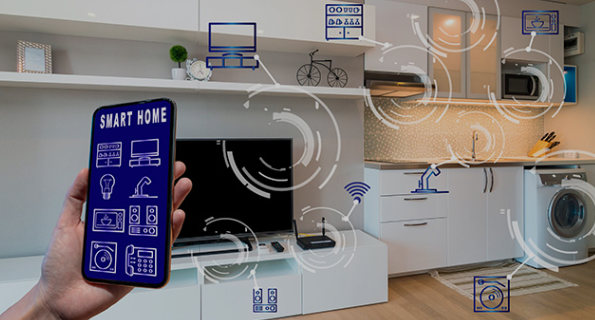Smart Mirrors For Virtual Outfit testing And Maintenance Check:

In the realm of technological innovation, smart mirrors have emerged as a fascinating intersection of fashion, technology, and practicality. Among their diverse applications, one particularly intriguing use case is their role in virtual outfit testing and maintenance checks. This article delves into the depths of smart mirrors, exploring the technology behind them, their evolution, and the transformative impact they’ve had on the way we approach fashion and personal maintenance.
II. The Technological Marvel: How Smart Mirrors Work
II.1. Core Components
Smart mirrors are not mere reflective surfaces; they integrate sophisticated technology to offer a range of functionalities. At their core, these mirrors typically consist of a two-way mirror, a display device, and an array of sensors. The two-way mirror, also known as a semi-transparent mirror, allows the display to shine through when activated, creating an overlay on the reflective surface.
II.2. Display Technology
The quality of the display is crucial for an immersive experience. High-resolution displays, often utilizing OLED or LCD technology, are embedded within the mirror to render realistic virtual images. These displays dynamically adjust to changing lighting conditions, ensuring clarity and accuracy in various environments.
II.3. Sensor Integration
To facilitate interaction, smart mirrors incorporate sensors such as cameras and depth sensors. These sensors capture the user’s movements and gestures, enabling seamless navigation through virtual wardrobes and outfit selections. The data collected also aids in accurate body mapping for virtual fitting.
II.4. Augmented Reality (AR) Implementation
Smart mirrors leverage augmented reality to superimpose virtual clothing items onto the user’s reflection. AR algorithms consider factors like body shape, size, and movement to realistically render how an outfit would look on an individual. This level of personalization enhances the virtual try-on experience, making it feel remarkably close to trying on physical garments.
III. Evolution of Smart Mirrors: From Novelty to Necessity
III.1. Early Prototypes and Conceptualization
The concept of smart mirrors dates back to early prototypes that were more conceptual than functional. These mirrors were limited in their capabilities and often seen as novelties rather than practical tools. However, they laid the foundation for the transformative evolution that was to come.
III.2. Integration with Fashion Retail
As technology advanced, the fashion industry recognized the potential of smart mirrors to revolutionize the retail experience. High-end fashion stores began integrating smart mirrors into fitting rooms, allowing customers to virtually try on a myriad of outfits without the hassle of changing clothes repeatedly. This not only enhanced the customer experience but also streamlined the shopping process.
III.3. Home Applications and DIY Solutions
With the rise of smart home technology, smart mirrors found their way into private residences. Enthusiasts and DIYers started experimenting with creating their own smart mirrors, driven by the desire for a personalized virtual dressing room experience. Open-source projects and online communities contributed to a growing ecosystem of ideas and innovations in this space.
III.4. Mainstream Adoption and Commercial Products
The turning point for smart mirrors came when major tech companies and startups began producing commercial versions with sleek designs and user-friendly interfaces. These mirrors catered to both individual consumers and businesses, marking the transition from a niche gadget to a mainstream product.
IV. Virtual Outfit Testing: Redefining the Dressing Room Experience
IV.1. Eliminating Dressing Room Hassles
One of the primary advantages of smart mirrors is their ability to eliminate the inconveniences associated with traditional dressing rooms. Users can try on numerous outfits virtually, minimizing the time spent changing clothes and avoiding the frustration of ill-fitting garments.
IV.2. Personalized Styling Recommendations
Smart mirrors, equipped with advanced algorithms, go beyond mere virtual try-ons. They analyze a user’s style preferences, past purchases, and current fashion trends to provide personalized styling recommendations. This not only enhances the shopping experience but also fosters a sense of individualized fashion curation.
IV.3. Social Sharing and Feedback
Integration with social media platforms allows users to share their virtual outfits with friends and seek feedback. This social aspect adds a new dimension to the shopping experience, turning it into a collaborative and interactive process. Friends can virtually shop together, regardless of geographical distances.
V. Maintenance Checks: Beyond Fashion
V.1. Automotive Smart Mirrors
Expanding the scope beyond the fashion industry, smart mirrors have found applications in automotive maintenance. These mirrors, equipped with sensors and diagnostic capabilities, can perform real-time checks on a vehicle’s condition. From detecting engine issues to assessing tire pressure, automotive smart mirrors contribute to proactive vehicle maintenance.
V.2. Health Monitoring Mirrors
In the realm of personal maintenance, smart mirrors are evolving to include health monitoring features. These mirrors can analyze facial expressions, skin conditions, and even vital signs to provide insights into an individual’s overall health. This intersection of technology and healthcare holds promise for early detection of certain health issues.
VI. Challenges and Future Directions
VI.1. Privacy Concerns
The integration of cameras and sensors in smart mirrors raises privacy concerns. Striking a balance between functionality and user privacy is a challenge that manufacturers must address to ensure widespread acceptance and adoption.
VI.2. Expanding Compatibility
To maximize the utility of smart mirrors, efforts are needed to enhance compatibility with a wide range of clothing brands, styles, and sizes. Standardization in virtual garment representation could pave the way for a more seamless and inclusive virtual try-on experience.
VI.3. Advancements in Artificial Intelligence
The future of smart mirrors hinges on advancements in artificial intelligence. Improvements in AI algorithms will further refine virtual try-on experiences, making them even more realistic and personalized.
VII. Conclusion
Smart mirrors for virtual outfit testing and maintenance checks have transcended their novelty origins to become integral components in the realms of fashion, retail, automotive, and personal health. The convergence of technology and practical applications has paved the way for a future where the mirror on the wall is not just a reflection but a gateway to personalized, efficient, and innovative experiences. As we move forward, the boldest subheading for smart mirrors could be “Reflecting Tomorrow: The Ever-Advancing World of Smart Mirrors.”




